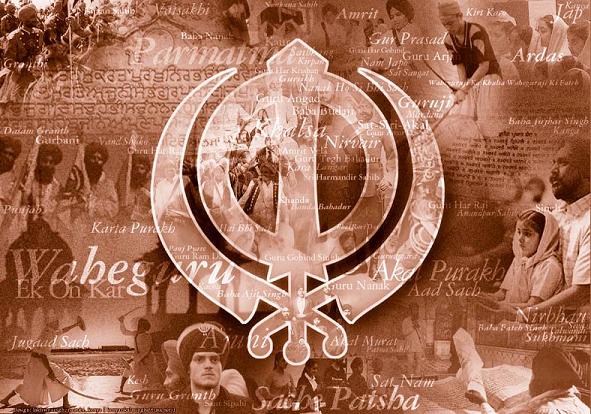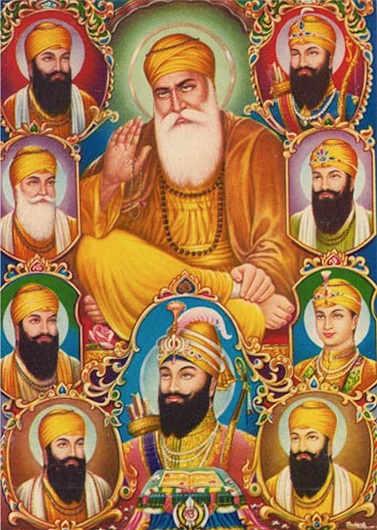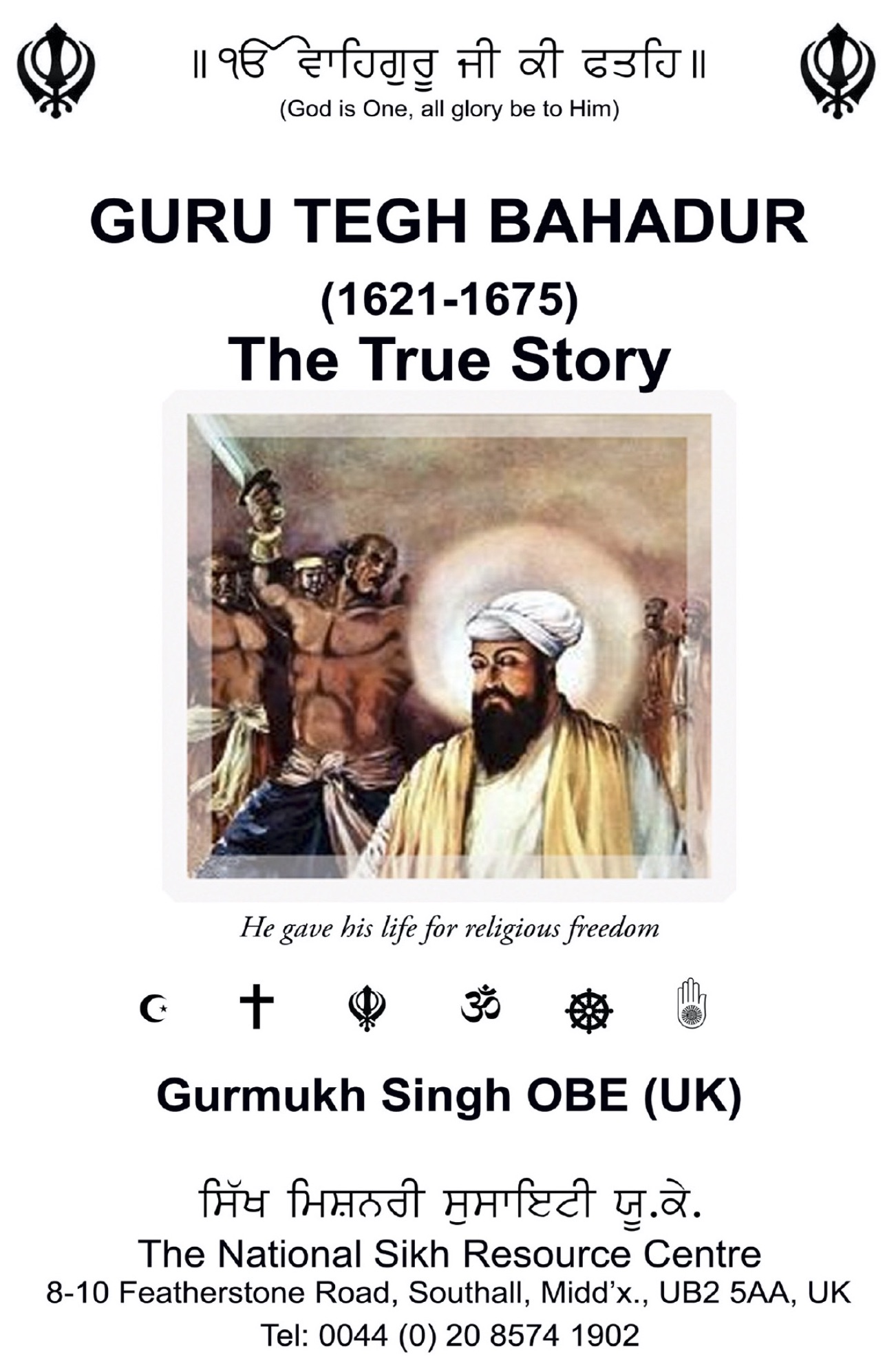Muslim chroniclers in the Indian subcontinent as far north as Afghanistan and west into Persia, of the 18th and 19th centuries referred to Sikhs as ‘Ahli Kitab’, the ‘followers of the Book’. Book meaning Guru Granth Sahib. So, though we Sikhs pride ourselves for having ‘scriptures’ (Guru Granth Sahib) which were written and compiled by our Gurus (Masters) themselves, we have sadly been found lacking in writing down our true history.
A large volume of folklore/fables and stories of magical happenings have crept into what is supposed to be our true ‘history’, especially the history of our Gurus (Gur-itihas).
We hear from our percharaks (lay-preachers), of miracles being performed by our Gurus which appear to be in direct conflict to the true spirit of Sikhi (Sikhism). (Nanak 5, Guru Arjan Sahib and Nanak 9, Guru Tegh Bahadur both refused to save themselves from torture and death with the use of occult powers.) As the author of Guru Tegh Bahadur – The True Story, Sardar Gurmukh Singh, points out, ‘sometimes, these preachers cannot escape from the Brahminic thought-trap and invariably end up interpreting Sikhi in Vedic or Snatan Dharma terminology life-style’.
However, Sikhi and Gurbani does bring together reason and faith in Divine Law (Hukam, Raza) which is beyond human comprehension. We do have experiences in life which are (or seem like) miracles (kautaks). They do occur as natural phenomenon in Divine Will. Otherwise, miracle making - if there is such a thing - is rejected by Sikhi. After all, Guru Nanak did ridicule yogis supposed to have occult powers. Sikhs also though, do believe in the power of Ardaas (prayer in total-surrender mode). There are references in Guru Granth Sahib to Ardaas. For example, Nanak 5, Guru Arjan prayed for the well-being of his son Hargobind, and the Ardaas was answered.
Nevertheless, that should not stop us from delving into ‘the Truth’ because the truth sometimes proves stranger than fiction, and simply, at the end, Truth must prevail. Older youth, especially western-orientated and educated, are more discerning, and a time comes when they need the ‘truth’. After all, a time comes when even Christian children have to be gleaned off Father Christmas too. Yet the ‘magic’ of life should remain. After all, miracles (kautak) do happen, whatever one’s belief is.
So far as the current position of Sikhs in India is concerned, Sardar Gurmukh Singh's "Guru Tegh Bahadur - The True Story" about Nanak 9, Guru Tegh Bahadur, is a work of painstaking research to bring out the unique martyrdom of the Guru, otherwise misinterpreted by both the NCERT (National Council for Education, Research & Training) of India historians and those with an open Hindutva agenda, to treat Sikhism as a sect of Hinduism (an ongoing subject of concern to all Sikhs).
This research clearly proves that Guru Tegh Bahadur, as all other Gurus, rejected Brahminic practices which were in place over centuries, namely meaningless rituals, and especially the caste system which was established and drummed into the DNA of the residents of the Indian sub-continent, to ensure a privileged position for the upper castes at the cost of subjugation of the lower castes.
If ‘India’ could fully comprehend and understand the deep impact and significance of the martyrdom of Guru Tegh Bahadur, who is also commonly referred to as ‘Hind dhi Chadar’ (The protective blanket of Hindustan), then not only would the value of Sikhs (and Sikhism) be recognized by Indians generally, but they would probably change the name of their capital Delhi to Tegh Bahadur City!
This research also debunks certain myths and discrepancies surrounding the Guru starting from Nanak 6, Guru Hargobind, the father of Tegh Bahadur right up to Nanak 10, his son, Guru Gobind Singh. In fact, this work further helps to establish Guru Tegh Bahadur as the ‘bridge’ between Guru Nanak with Guru Gobind Singh, and beyond. The author lists 12 such ‘debunks’. I shall address a few startling ones further down.
There are those, even amongst us, who consider themselves followers of Guru Nanak alone, with Guru Granth Sahib to support their ‘way of life’. They are squeamish about the mention of the apparent grandeur and martial temperament of Nanak 6, Guru Hargobind for example, and especially his grandson, Nanak 10, Guru Gobind Singh. They prefer the ‘piri’ (religious) aspect of Sikhi and shy away from the ‘miri’ (the temporal). This book establishes Guru Tegh Bahadur as the bridge, the ultimate reflection of ‘Miri-Piri’. He straddles the twin pillars of Miri-Piri like a giant!
Tegh Bahadur was born Tyag Mal. He proved his prowess as a warrior in his early teens and was renamed Tegh Bahadur (Champion Swordsman). Yet he is reputed to have chosen a simple life and carried out extensive preaching tours in the northern part of the Indian subcontinent, first as Baba Tegh Bahadur, and later as Guru Tegh Bahadur. This research debunks the myth that he sought refuge in hermit-like meditation for over 20 years (some say over 26 years), though there is no doubt that he was a recluse at heart as reflected by his profound inspired verses incorporated into the Guru Granth Sahib. A Sikh has no time to shut oneself away for years meditating! A Sikh’s life is one of daily action. Meditation is a 24-hour a day affair in the din of life as a householder, not in prolonged isolation.
Though a proven warrior, when the time came, he did not resort to the sword, simply because the time was not right for drawing the sword. He left that to his son, Guru Gobind Singh. Instead, he shook the very foundations of the oppressive Moghul empire with his martyrdom. He is the true reflection of a dynamic form of ‘passive resistance’ – a saintly warrior who lays down his sword and gives his head for a just cause. It is not the life-negating brand of ‘ahimsa’ which Indians generally understand – non-violence at all costs. It is a brand of active, ever-ascending (Chardhi Kala) ‘ahimsa’ incorporated into ‘dharam-yudh’ (spiritual war for a just cause).
Another significant reason why he is the ‘bridge’, is the fact that after his grandfather, Nanak 5, Guru Arjan Sahib, who penned the largest portion of inspired verses in, and also edited, the Aad Granth, it is Guru Tegh Bahadur’s moving inspired verses which are incorporated into the Aad Granth by Guru Gobind Singh to complete it as the eternal Master and scripture, the Guru Granth Sahib. The other Gurus after Nanak 5, Guru Arjan Sahib Ji, did not contribute towards the Guru Granth Sahib.
From a personal perspective, one more major ‘bridging’ aspect of Guru Tegh Bahadur highlighted by the author, is his contribution towards Gurmatt Sangeet (Sikh spiritual music and hymn singing) or simply kirten. Besides inclusion of four of his hymns in Raag Jaijaiwanti, as the 31st. ‘section’ in Guru Granth Sahib, he also introduced greater emphasis on congregational kirtan throughout his ‘perchaar’ journeys. From a two-person kirten started by Guru Nanak (presumably without rhythm), gurmatt sangeet progressed towards greater inclusion of other string and beat instruments. During Guru Tegh Bahadur’s time, there were kirtenias (hymn singers), persangh dhadhis (balladeers) and ragis (those who adhered to the raags, musical and rhythm strains where prescribed). There were kirtan 'jathas' (groups), accompaniment of multiple instruments and congregational hymn singing as he travelled in a ‘vaheer’ (caravan-like mobility) with many ‘sewadhars’, spiritual singers/musicians and security spreading this method of kirtan in north India.
This paved the way to further widening the scope of kirtan by Guru Gobind Singh opening the doors to kirten becoming a global phenomenon today and a mainstay of any Sikh religious service (smagam) anywhere on the globe. Even some of his own inspired verses have a strong rhythmic influence (eg. Jaap Sahib)!
The other aspect of great importance in this research points to, is the greater need for accuracy of dates, and hints at the importance of the Sikh Quom adopting the Nanakshahi calender to decrease further confusion in our ranks and thrust us forward as a global life-philosophy into the 21st century and beyond.
As stated earlier, the author lists 12 startling facts and misconceptions which might not be common knowledge amongst Sikhs generally. I wish to highlight a few more which were a revelation even to me.
New ‘Assamese Buranji’ evidence uncovered by the author, as a contemporary source, brings out the complicity of the Brahmin in the destiny and end fate of Guru Tegh Bahadur. The Assamese chroniclers became aware of the covert complaints by the Brahmins to the Moghul emperor about the influence the Guru was having on the masses on his extensive preaching tours in the northern parts of the Indian subcontinent - about religious and universal freedoms. This was disconcerting not only to the Islamic clergy (it threatened their and the emperor’s, dominating influence on the masses) but also the Brahmin ideology. It threatened their comfortable position as the highest privileged class in the caste system. This was around the time after 1656 when the emperor changes from Shah Jahan to the cruel Aurungzeb.) The seeds of Guru Tegh Bahadur’s destiny were already being sown almost 20 years before his martyrdom.
The second interesting revelation here is the daring and obvious planning of Delhi Sikhs who knew what was to happen to the Guru’s human garb after beheading. It will appear that the plan of the emperor was to quarter the body of the Guru and hang the parts as a display at various prominent points in the city, and one can assume, the severed head at the centre as a reminder of the fate of anyone who opposed or defied the emperor! (Reminds one of the true story of the end of the Scottish rebel William Wallace as depicted in the epic movie ‘Braveheart’.)
Delhi Sikhs were determined not to allow the remains of the Guru to be desecrated in any manner! Hence the plan, and its successful execution, with cremation of the body in the house of Lakhi Shah Vanjara and the dismembered head taken to Anandpur Sahib by Bhai Jaita, helped by Bhai Uday for dignified cremation.
It will also appear from this research that though, as lay Sikhs we have always been brought up to believe that Baba Ram Rai was disgraced and banished by his father Nanak 7, Guru Har Rai, because he changed a word in Gurbani. He had substituted the word ‘Musselman’ to ‘be-iman’ when confronted by the emperor who was a Muslim. In fact, Baba Ram Rai kept on serving the Guru till his demise and was never far away from being called into service of the Guru. The mistake was unforgiveable but that did not mean he was henceforth shunned by the House of the Guru, or the Sikhs. The true Sikh way is never to humiliate one who has strayed, but the price of the erring as to be paid, so that it is never repeated again, even by someone else. Baba Ram Rai does play an important role within the Guru’s household and amongst the Sikhs as a respected Elder, during the lives of Nanak 8, Guru Har Krishan and Guru Tegh Bahadur.
In conclusion, to fully grasp the full spiritual and temporal depth of Sikh life philosophy, the author proves that one needs to be fully aware of the contribution of Nanak 9, Guru Tegh Bahadur, from his mild, reflective but firm temperament yet early bravery as a warrior, through his vast preaching tours; a life of service and action; a family man; his profound God-inspired verses encapsulated in the Guru Granth Sahib; his indifference and rancour-free (nirvair) nature towards the centuries-strong in-bred wily nature of the Brahmin; his fearlessness (nirbhau) towards the cruelty of the emperor and the Muslim clergy; and his unwavering faith in the Creator-Being culminating in his martyrdom for the right of the ordinary human to practice his/her religion or chosen ‘way of life’ without fear. No other God-inspired, divine soul has come close to the contribution of Guru Tegh Bahadur towards all of humanity. The fact that he is called Hind-dhi-Chadar, is merely a by-product of his profound, unmatchable greatness.
As time goes by, and with the inspiration from this research dissertation on Guru Tegh Bahadur, we can hope that more and more research is carried out, on the ‘untruths’ or ‘half-truths’ in especially Gur-itihas (history of our Gurus), and also of the formative years of the post-Guru period, to give us a clearer picture of true Sikh life-philosophy. If nothing else, this book will inspire Sikhs to question certain practices that have crept into ‘living’ Sikhi which appear to align it backwards towards Brahminic or even Hindu rites, rituals and practices.
Time has come for Sikhism to grow from an ‘Indian’ (traditions and beliefs based) religion into a global life philosophy propagating universal truths, based on the twin pillars of Miri-Piri (temporal and spiritual) and the tripartite doctrine of Naam japna (constant remembrance of the Creator-Being), kirt karni (working for one’s livelihood) and wand shekena (sharing with others, sewa) espoused by the Grand-Master, Guru Nanak Sahib, practised by all the Gurus, and enshrined in the last and eternal Master and scriptures, Guru Granth Sahib.
There is a tendency especially in ‘western-orientation’ to separate ‘religion’ from ‘politics’ or even the social aspects of life. Sikhi is an all-engulfing theo-political life-philosophy. So, besides focusing on the Guru Granth Sahib and Gurbani, it is important to read well-researched Sikh history of the lives of the Gurus and great Gursikhs (the Khalsa), as an essential aid to the interpretation of Gurbani into ‘lived’ Sikhi. It will help one to better understand Sikhi, and further enhance one’s understanding of the inspired verses within the Guru Granth Sahib.
This book reads like an epic worthy of some of the greatest stories of man ever told. The author has also given some research-based views about all the other nine Gurus in an early chapter.
To Sikh youth especially, besides the non-Sikh casual reader and even research scholar, I like to say that this book will help you better understand the true lives of our prime role models, the Gurus especially Guru Tegh Bahadur and enhance your understanding of the ‘spirit’ that is truly lived Sikhism and far from being just an Indian-based ‘religion’.
The ebook is available at the following link - Guru Tegh Bahadur (1621-1675) - The True Story (2nd Edition)
Dya Singh
"Sikhing"
E-mail: dyasingh@khalsa.com
PO Box 77, Doveton, 3177, Australia
Contact: +61 426 254 647


